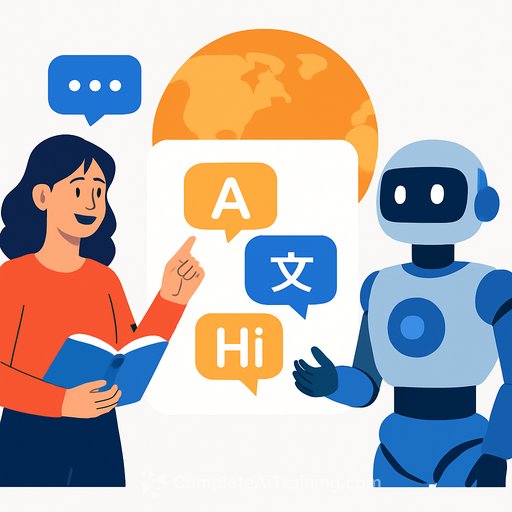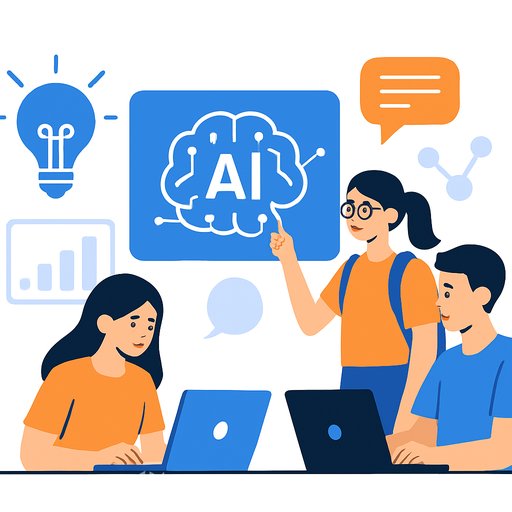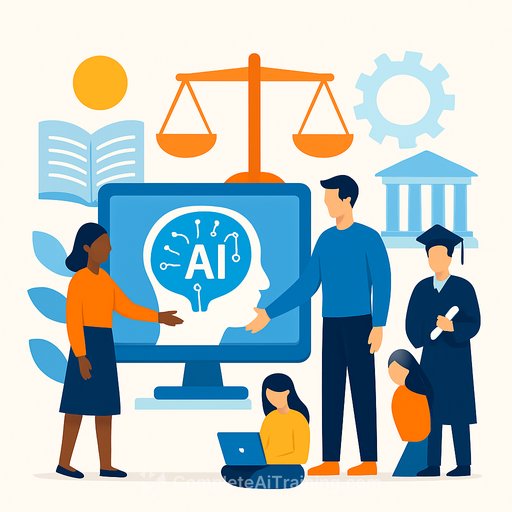Why learning a language still matters in the age of AI
AI can draft a polite email in French and translate a shopping request into Swedish. Useful, yes. But fluency isn't the end goal. Schools still need to build cultural empathy, nuance, and trust-skills a prompt can't produce.
Language learning isn't a relic. It's a practical path to cultural literacy, adaptability, and global competence. These are essential for young people who will live, study, and work across borders.
What AI can do-and what it can't
- AI speeds up drills: vocabulary, grammar checks, pronunciation feedback.
- AI helps with transactional tasks: emails, summaries, quick translations.
- AI can't teach students to read between the lines, sense context, or build credibility in real conversations.
As the OECD's Director for Education and Skills has argued, the job is to develop "first-class humans," not "second-class robots" who miss what isn't said. Language learning trains those human skills: listening for nuance, recognizing cues, and responding with cultural care. For broader context, see the OECD's work on global competence here.
Signals from policy and sector leaders
Since generative AI arrived in classrooms, language educators have been urged to refresh the case for languages-beyond travel phrases and exam scores. Recent sector conversations emphasize cultural literacy, regional engagement, and diplomatic capability as core outcomes.
In Victoria, a new China Strategy places Chinese language and cultural literacy at the center of deeper connections-on campus, through partnerships, and in community. Nationally, a federal inquiry is examining how education builds Asia capability through language skills, intercultural learning, and diplomacy.
A case study: building global competence across a whole school
At Haileybury, leaders have spent more than 18 months rethinking how language learning and global experiences work together. The result is a pipeline of curricular, co-curricular, and extracurricular initiatives that connect students early and often.
- Junior School Languages and Cultures (Prep): Peer-to-peer learning, bilingual role models, and metalinguistic awareness built from day one.
- Global buddy classes (from 2026, Year 1): Each class is paired with a class abroad, starting with "Our closest neighbours" in Indonesia, Papua New Guinea, and Timor-Leste. Students change buddies each year for a wider global view.
- Bilingual pathways (Middle School, Chinese-background students): Courses that deepen knowledge of Chinese language, culture, and society while helping students move between Australian and Chinese contexts with confidence.
- International Outlook Student Club (Senior School): Participation in Asia-Pacific youth forums, SDG projects, video exchanges with partner schools, and student-led tours that sharpen cross-cultural communication. Explore the SDGs here.
- Pre-departure cultural primers and workshops: Focused preparation for trips to India, France, Japan, and China so students land ready for meaningful interactions, not just sightseeing.
- Measuring what matters: A three-year International Outlook Strategy embeds opportunities from ELC to Senior School. Selected staff use a Global Competence Model, and students are tracked with a formal global competence assessment.
"Haileybury is ahead of the game with the design, development and implementation of a range of innovative curricular, co-curricular and extracurricular activities."
What schools can implement this year
- Reframe the purpose: Put cultural literacy, relationship-building, and ethical communication at the center of your language rationale.
- Start small with global connections: Pair classes with partner classrooms in the region. Begin with low-stakes exchanges: short videos, shared photo prompts, and co-created glossaries.
- Support heritage learners: Offer bilingual or heritage tracks that value prior knowledge and build deeper cultural insight instead of repeating basics.
- Make it experiential: Link projects to the SDGs, host online forums with partner schools, and assign student ambassador roles during international visits.
- Prepare before departure: Run cultural primers and intercultural communication workshops so trips and exchanges create real learning, not surface-level tourism.
- Assess global competence: Use clear rubrics for perspective-taking, empathy, and cross-cultural communication. Share criteria with students and families.
- Use AI as a co-teacher, not a crutch: Allow AI for practice, feedback, and idea generation-then require personal voice, reflection, and spoken performance for assessment.
Practical guardrails for AI in language classes
- Transparency: Require students to disclose when and how they used AI and to submit key prompts.
- Process over product: Collect drafts, recordings, and reflection notes to show effort and growth.
- Assessment integrity: Prioritize live speaking, in-class writing, and culturally grounded tasks that AI can't complete credibly.
- Teach prompt literacy: Show students how to ask for feedback, not answers; how to request cultural notes; and how to cross-check output.
If your staff need structured upskilling on classroom-safe AI, see role-based options here.
The takeaway
AI will keep improving. Let it handle the mechanical stuff. Schools should double down on what makes graduates credible across cultures: empathy, context, and human connection. Language programs are where those strengths are built-lesson by lesson, conversation by conversation.
Your membership also unlocks:






